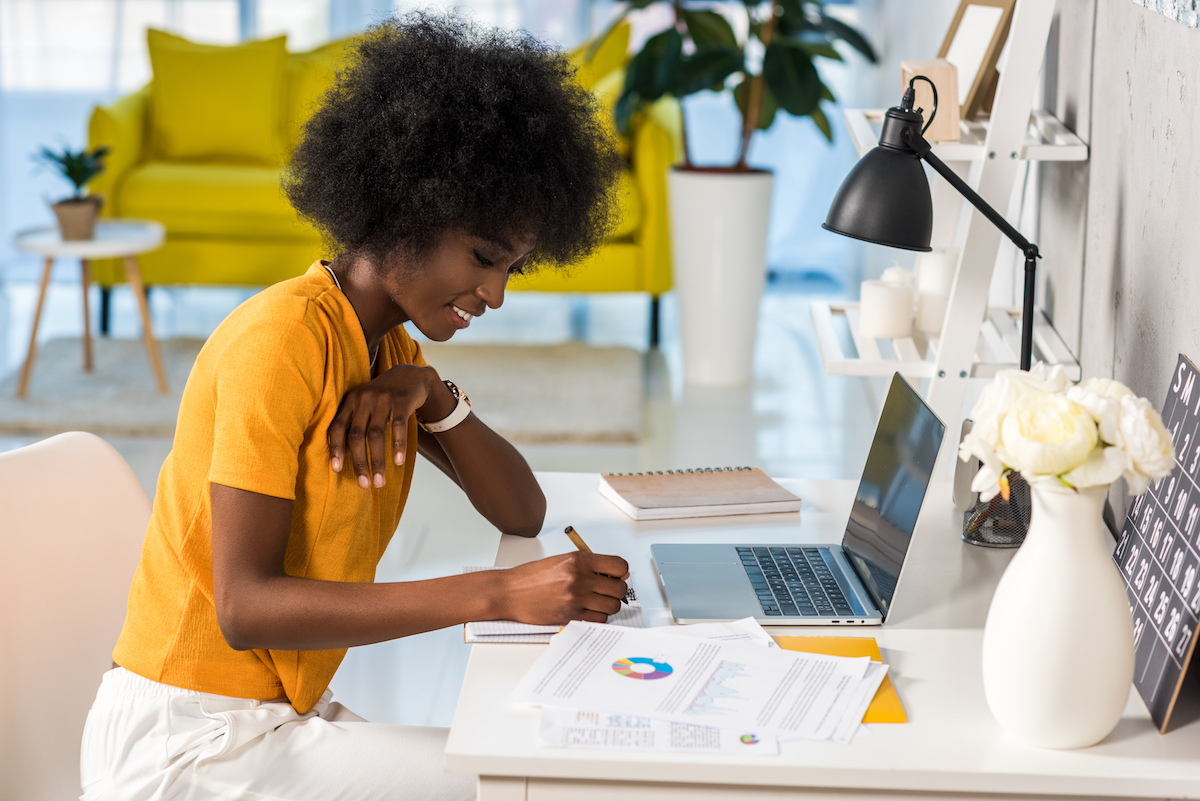
Sitting for hours on end can be a part of modern life, but sometimes, it can lead to back problems. These 5 tips can keep you sitting pretty, minus the pain.
You might have heard that sitting is the new smoking. One large study found an association between prolonged sitting and a greater risk of dying from all causes — even for people who exercised regularly — and Americans today tend to sit a lot. A recent study from the Centers for Disease Control and Prevention found that roughly 25% of adults sit for more than 8 hours a day. This probably isn’t surprising, considering how many of us sit at a desk or work on a computer all day, particularly while working from home.
It may not come as a surprise that sitting for long periods of time can also take a toll on your back.
“Prolonged sedentary behavior has long been associated with spine pain, including neck, mid-back and low-back symptoms,” says Gene Tekmyster, DO, an orthopedic surgeon at Keck Medicine of USC and assistant professor of clinical orthopedic surgery at the Keck School of Medicine at USC. “People who spend more than 7 hours a day sitting also have lower mobility in their spine, which can lead to discomfort and weakness in the lower back muscles.”
So what should you do if you spend most of your day sitting? These five tips can help reduce your risk for developing back pain.
1. Try not to slouch.
Your parents may have told you to “sit up straight,” and that was good advice.
“The mechanics of sitting increases muscle stiffness and pressure on the discs of the spine, particularly in the lower back,” Dr. Tekmyster explains. “Slouching can cause undue stress to the ligaments of the spine, which can lead to abnormal forces in the lumbar joints and discs, causing pain.”
“The longer you spend in a seated position, the greater the chance you have of slouching, which can cause stiffness in the hips,” he adds.
When you’re sitting, instead of curving your spine into a “C” shape, it’s best to keep your back straight for proper sitting posture.
“The ideal position is to maintain 90 degrees of hip flexion, so your upper legs are at a 90-degree angle to your body, and keep your back straight,” Dr. Tekmyster says. “This is difficult to do for long periods of time, but investing in an ergonomic chair and using proper posture can help.”
Also, if your feet don’t rest on the floor, use a stool or a stack of books. It’s also important to make sure your work surface is at a comfortable height.
2. Watch the clock.
The amount of time you spend sitting is just as important as posture, according to Dr. Tekmyster.
“While you may feel comfortable in your chair, staying in the same position for long periods is not optimal,” he says. “Varying your posture by occasionally standing and moving around for at least a few minutes each hour is paramount. Setting an alarm every hour can help you to remember to move.”
3. Switch things up.
If you or your company can invest in a sit-stand desk, you’ll be able to change your position without stopping work. “Using a sit-stand desk is a great way not only to minimize back pain but also to boost productivity and burn up to 30% more calories throughout the day,” Dr. Tekmyster says.
Don’t have a sit-stand desk? It’s okay to improvise.
“You can use a counter, or you can stack books to make your workstation higher for a period of time,” he adds.
4. Strengthen your muscles.
Even though exercise alone may not be enough to make up for an otherwise sedentary lifestyle, exercise can strengthen support muscles, which can prevent back pain caused by sitting.
Dr. Tekmyster recommends exercising regularly, while incorporating a core strengthening and pelvic stability routine.
“This includes stretching the muscles that often become tight or are not used during sitting, such as the abdominals, glutes and hamstrings,” he says.
5. Don’t go overboard.
It’s not necessary to cut out sitting all together, which could actually be detrimental, as well.
“Remember that varying postures is best for your back and neck, so don’t go to the opposite extreme and never sit,” Dr. Tekmyster says. “Mixing sitting, standing and movement throughout your day is the best way you can keep your spine safe and keep your body healthy.”
Topics
